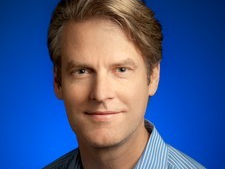From brand safety to ad fraud, Google has been in the thick of an advertising maelstrom this year.
Google’s head of advertising in the Americas Allan Thygesen acknowledged the mishaps, and said the company was working to rectify them during an Advertising Week panel on Tuesday. But he said that it was not something that Google could do alone.
“Few companies have as large a stake in the future digital advertising as Google does, and I completely agree and acknowledge that we haven’t been perfect,” he said in a conversation with Unilever marketing chief Keith Weed. “It’s not a challenge that Google can solve on its own, but we can certainly take the lead in identifying some principles that can hopefully help the issue moving forward.”
Thygesen referenced YouTube’s brand safety crisis from earlier this year in particular, calling it “a complete miss on our part.” But he said that the company was committed to and had made progress on addressing the challenges, specifically with regards to viewability, transparency and trust.
Brands and marketers have been cracking the whip on platforms like Google lately, clamoring for more third-party measurement, viewability and transparency in the digital ads ecosystem. Brands want to buy ads that are 100% visible to consumers, and that he wanted third-party to track ad campaigns and want to know where their ads are running and how their digital budgets are being spent.
In response to that, YouTube is now 93% to 95% percent viewable, said Thygesen, per the company's most recent research. The industry average is in the 60s. Google has also introduced new controls and settings for YouTube in response to the brand safety crisis earlier this year.
Thygesen also said that the company was committed to building trust, evident in the fact that it was issuing refunds for ads that ran on websites with fake traffic, and working on developing a tool to give marketers more transparency about the ads they buy on its platform.
"These are three principles that we all need to aspire to as an industry and they apply equally across consumers, advertisers and publishers," he said. "We want advertising to be valuable, in that it allows an advertiser to reach real people and get real business value."

